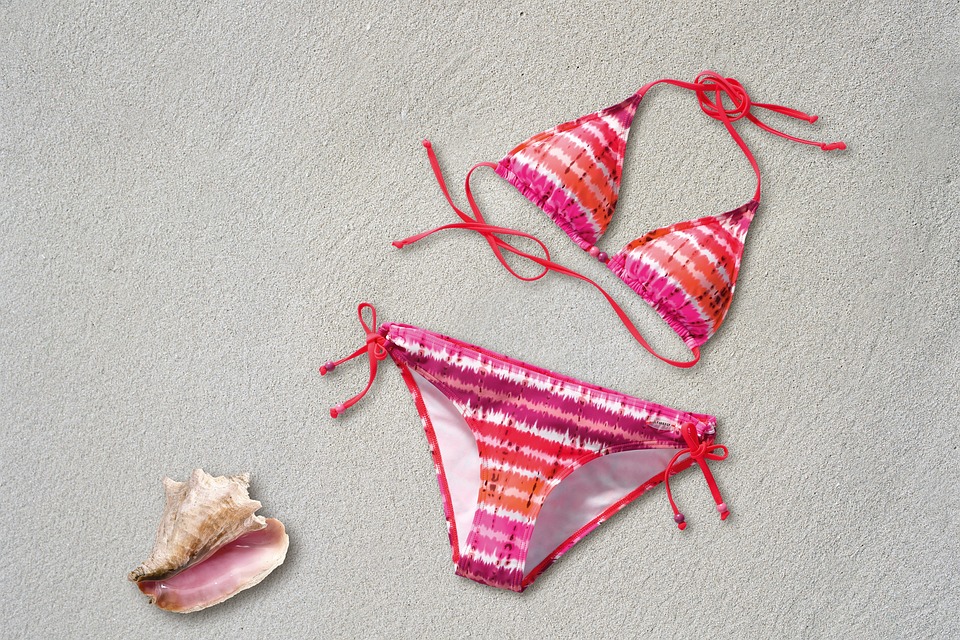Introduction
Ingrown hairs are a common problem faced by many people, especially women, who shave or wax their bikini area. Bikini line ingrown hairs can be painful, itchy, and unsightly. Ingrown hairs occur when the hair curls back and grows into the skin instead of growing out of it. This can cause inflammation and infection, leading to red bumps and pus-filled blisters. In this article, we will discuss the causes of bikini line ingrown hairs and the best treatment options available.
Causes of Bikini Line Ingrown Hairs
There are several reasons why ingrown hairs occur in the bikini area. One of the most common causes is shaving or waxing. When you shave or wax your bikini area, you are removing the hair from the root. This can cause the hair to grow back in an uneven manner, leading to ingrown hairs. Tight clothing can also cause ingrown hairs by rubbing against the skin and pushing the hair back into the skin.
Another reason for ingrown hairs is improper exfoliation. Exfoliating the skin helps to remove dead skin cells and unclog pores, which can prevent ingrown hairs from forming. If you do not exfoliate regularly, dead skin cells can build up and trap the hair, causing it to grow into the skin.
Symptoms of Bikini Line Ingrown Hairs
The symptoms of bikini line ingrown hairs can vary from person to person. Some people may experience mild irritation, while others may experience severe pain and discomfort. The most common symptoms of ingrown hairs include:
– Red bumps or pimples
– Itching or burning sensation
– Whiteheads or pus-filled blisters
– Dark spots or hyperpigmentation
– Swelling and inflammation
If you experience any of these symptoms, it is important to seek treatment to prevent the infection from spreading.
Treatment Options for Bikini Line Ingrown Hairs
There are several treatment options available for bikini line ingrown hairs. The most effective treatment will depend on the severity of your symptoms. Here are some of the most common treatment options:
1. Warm Compress
A warm compress can help to reduce inflammation and soothe the skin. To make a warm compress, soak a clean cloth in warm water and place it on the affected area for 10-15 minutes. Repeat this process several times a day until the symptoms improve.
2. Exfoliation
Exfoliating the skin can help to remove dead skin cells and unclog pores, which can prevent ingrown hairs from forming. Use a gentle exfoliating scrub or brush to massage the affected area in a circular motion. Be gentle and avoid scrubbing too hard, as this can cause further irritation.
3. Topical Creams
Topical creams containing salicylic acid or glycolic acid can help to exfoliate the skin and prevent ingrown hairs from forming. These creams can also help to reduce inflammation and soothe the skin. Apply the cream to the affected area once or twice a day, depending on the severity of your symptoms.
4. Antibiotics
If the ingrown hair becomes infected, your doctor may prescribe antibiotics to help clear up the infection. Be sure to take the antibiotics as directed and finish the entire course, even if your symptoms improve.
5. Laser Hair Removal
Laser hair removal is a long-term solution for bikini line ingrown hairs. This procedure uses a laser to destroy the hair follicle, preventing the hair from growing back. Laser hair removal is safe and effective, but it can be expensive and may require several sessions to achieve the desired results.
Prevention Tips for Bikini Line Ingrown Hairs
Preventing ingrown hairs from occurring in the first place is the best way to avoid the pain and discomfort associated with them. Here are some tips to help prevent bikini line ingrown hairs:
– Exfoliate regularly to remove dead skin cells and unclog pores
– Avoid tight clothing that can rub against the skin and push the hair back into the skin
– Use a sharp razor when shaving and avoid going over the same area multiple times
– Shave in the direction of hair growth to reduce the risk of ingrown hairs
– Moisturize the skin after shaving or waxing to keep it hydrated and prevent irritation
– Consider laser hair removal as a long-term solution for ingrown hairs
Conclusion
Bikini line ingrown hairs can be a painful and unsightly problem, but there are several treatment options available to help alleviate the symptoms. The most effective treatment will depend on the severity of your symptoms, but warm compresses, exfoliation, topical creams, antibiotics, and laser hair removal are all viable options. Preventing ingrown hairs from occurring in the first place is the best way to avoid the pain and discomfort associated with them. Exfoliating regularly, avoiding tight clothing, and using a sharp razor when shaving can all help to prevent ingrown hairs from forming.
Top Questions About Bikini Line Ingrown Hair Treatment
What causes ingrown hairs on the bikini line?
Ingrown hairs on the bikini line are caused by hair follicles that curl back or grow sideways into the skin instead of growing out of it. This can occur due to a variety of reasons, including improper hair removal techniques, friction from tight clothing, and genetics. The three most important things to know about the causes of ingrown hairs on the bikini line are:
1. Improper hair removal techniques, such as shaving against the grain or using dull razors, can increase the risk of ingrown hairs.
2. Tight clothing or underwear can create friction against the skin, leading to ingrown hairs.
3. Some people may have a genetic predisposition to ingrown hairs, making them more prone to developing them on the bikini line.
What are the symptoms of ingrown hairs on the bikini line?
Ingrown hairs on the bikini line can cause a variety of symptoms, including redness, itching, and the appearance of small bumps or pimples. The three most important things to know about the symptoms of ingrown hairs on the bikini line are:
1. Redness and inflammation around the hair follicle is a common symptom of ingrown hairs on the bikini line.
2. Small, raised bumps or pimples may also develop in the affected area.
3. Ingrown hairs on the bikini line can be itchy and uncomfortable, and may even become infected if left untreated.
How can I prevent ingrown hairs on the bikini line?
There are several steps you can take to prevent ingrown hairs on the bikini line. These include exfoliating regularly, using proper hair removal techniques, and wearing loose-fitting clothing. The three most important things to know about preventing ingrown hairs on the bikini line are:
1. Regular exfoliation can help prevent ingrown hairs by removing dead skin cells and allowing hairs to grow out of the skin more easily.
2. Using proper hair removal techniques, such as shaving in the direction of hair growth and using a sharp razor, can also help prevent ingrown hairs on the bikini line.
3. Avoid wearing tight clothing or underwear that can create friction against the skin and increase the risk of developing ingrown hairs.
What are some home remedies for treating ingrown hairs on the bikini line?
There are several home remedies that may help treat ingrown hairs on the bikini line. These include applying warm compresses, using tea tree oil, and gently exfoliating the affected area. The three most important things to know about home remedies for treating ingrown hairs on the bikini line are:
1. Applying a warm compress to the affected area can help reduce inflammation and promote healing.
2. Tea tree oil has anti-inflammatory and antibacterial properties that may help reduce the risk of infection and soothe irritated skin.
3. Gently exfoliating the bikini line with a soft-bristled brush or a sugar scrub can help remove dead skin cells and promote hair growth.
When should I see a doctor for ingrown hairs on the bikini line?
In most cases, ingrown hairs on the bikini line can be treated at home with over-the-counter remedies. However, you should see a doctor if you develop signs of infection, such as pus, redness, and swelling, or if the ingrown hair does not improve after a few days of home treatment. The three most important things to know about when to see a doctor for ingrown hairs on the bikini line are:
1. Signs of infection, such as pus, redness, and swelling, require medical attention and may require antibiotics.
2. If the ingrown hair does not improve after a few days of home treatment, it may be a sign of a more serious condition that requires medical attention.
3. If you have a history of recurrent ingrown hairs or a skin condition like eczema or psoriasis, you may be more prone to developing ingrown hairs on the bikini line and should speak to your doctor about treatment options.
Introduction
Ingrown hair is a common problem faced by both men and women. It occurs when the hair grows back into the skin instead of growing out of it. One of the most common areas where ingrown hair occurs is the bikini line. However, there are many misconceptions surrounding bikini line ingrown hair treatment. In this article, we will discuss some of these misconceptions and provide information that will help you better understand how to deal with ingrown hair in the bikini area.
Misconception 1: Shaving is the Main Cause of Ingrown Hairs
One of the most common misconceptions regarding ingrown hair is that shaving is the main cause of it. While shaving can contribute to ingrown hairs, it is not the primary cause. The primary cause of ingrown hairs is hair growth. When hair grows back into the skin, it can cause inflammation and irritation, leading to ingrown hairs. Shaving can contribute to this by creating sharp edges on the hair that make it easier for the hair to grow back into the skin.
Misconception 2: Tweezing is the Best Way to Get Rid of Ingrown Hairs
Another common misconception is that tweezing is the best way to get rid of ingrown hairs. While tweezing can be effective, it is not always the best option. Tweezing can cause more irritation and inflammation, which can lead to more ingrown hairs. It can also be painful and time-consuming. Instead, it is recommended to use a gentle exfoliating product to help remove dead skin cells and prevent hair from growing back into the skin.
Misconception 3: Ingrown Hairs are Harmless
Many people believe that ingrown hairs are harmless and will go away on their own. While some ingrown hairs may resolve on their own, others can become infected and cause more serious issues. Ingrown hairs can cause redness, swelling, and pain. They can also lead to scarring and hyperpigmentation if left untreated. It is important to treat ingrown hairs as soon as they are noticed to prevent further complications.
Misconception 4: Chemical Hair Removal is the Best Option
Another common misconception is that chemical hair removal is the best option for preventing ingrown hairs. While chemical hair removal can be effective, it can also be harsh on the skin and cause more irritation. Chemicals such as depilatory creams can cause burns, rashes, and other skin irritations. It is important to choose a gentle hair removal method that does not cause too much stress on the skin.
Misconception 5: Ingrown Hairs Only Affect Women
Finally, there is a misconception that ingrown hairs only affect women. While women are more likely to experience ingrown hairs due to hair removal practices, men can also experience ingrown hairs in the bikini area. Men who shave their pubic hair can develop ingrown hairs as well. It is important for both men and women to take steps to prevent and treat ingrown hairs in the bikini area.
Conclusion
In conclusion, there are many misconceptions surrounding bikini line ingrown hair treatment. It is important to understand the primary causes of ingrown hairs and to choose gentle hair removal methods that do not cause too much stress on the skin. It is also important to treat ingrown hairs as soon as they are noticed to prevent further complications. By following these tips, you can effectively prevent and treat ingrown hairs in the bikini area.
Bikini Line Ingrown Hair Treatment
#Bikini #Line #Ingrown #Hair #Treatment


